Some time back, I wrote a story about Boffers: (Boffing Article!) Designed by fencer/coach Jack Nottingham, they were the Rolls-Royce of polyethylene toy swords. They could be found for sale via mail order from the Whole Earth Catalog, the 1960s version of Google, but for hippies. The publisher of said catalog, Stewart Brand, once made an appearance on the Dick Cavett show and showed off the proper form and use of boffers. And lo! The interwebs comes through once more. Unless you really like old Dick Cavett shows, you can skip to a little way past the 26 minute mark to see the introduction of boffers followed closely with boffers being put to use in a matchup of Stewart Brand and actor Woody Strode. You can decide who comes out ahead if you want to. But really, in a match of boffers can anyone really be considered a loser? (Dick Cavett gets boff’d. Be aware, this clip starts with some naughty language. Fair warning.)
The original Boffer, complete with hand guard.
The boffers were a polyethylene “sword” with a wooden handle mounted into the “your hand goes here” end. The length was about that of a sabre blade and the shape tapered toward the leading edge, giving it the form of a cutting more than thrusting toy. In short, you’d whack people with it. I’ve handled a couple of these before. The Archive has had a pair for awhile, but they are pretty beat up – one is missing about half its original length – and the donation included just the boffers alone. The full set came not only with a pair of boffers, but foam hand guards and two sets of goggles on an elastic band that also included on the same band a pair of ear-protecting foam circles. Protection and space man costume combined. Win! And yes, you ordered them in pairs.
I don’t know if this would protect you from the coronavirus to any extent, but you’d look good anyway.
Michael D’Asaro Sr. (left) and Charlie Selberg model the boffer ear and eye protective gear. This photo and many others were taken at a beach in Santa Cruz, the idea being the photos would be used to advertise the proper use of the boffer. I’ve never seen an ad that actually used any of the photos for that purpose, but the pictures are fun.
As luck would have it, my one-and-a-half boffers were not the last of the breed. To the rescue of history comes Archive contributor and showrunner for the Pacific Fencing Club, Harold Hayes. Harold had a box stashed away in a corner that contained four boffers in excellent condition, considering their age. Also included was one of the hand guards and two of the masks. You could start a war! However, I think these are going to have to be kept somewhere safe. I don’t know what the half-life is for polyethylene of this vintage might be, but I can’t imagine these would hold up to much whackin’ & bashin’.
Harold’s donation included these four boffers and they are in pretty good shape. One appears to have been repaired at some point and there is only one remaining hand guard.
John McDougall mentioned to me that he remembers seeing Jack Nottingham working on these in San Francisco. They were hand-shaped like a surfboard. No idea what tools would be needed or which flavor of polyethylene you would use to recreate this work. It’s a tempting idea. Performance-wise, these are so much more satisfying than the shabby kids-toy imitations on the market these days.
A close-up of the gripping end. Stability comes from a stick that’s jammed to an unknown depth into the wide end and glued in place. The handle is formed around the end of the stick, presumably made in a mold, and is some sort of poured resin. I don’t have any experience with resin molding, so I don’t know if that’s an easy or hard process. The handles are consistent, one to another, so there was some way to contain the material in the desired shape to create the expected outcome.
I can’t help but wonder if these could be brought back into today’s marketplace. There are certainly foam swords out there. Many a club keeps them handy for birthday parties or other functions with playtime for wee ones who might otherwise put an eye out if handed an actual foil or sabre. But the design of the original is actually really great. They have a nice whippy end for delivering a good, though not painful, whack, the middle part is fairly solid, and the thickest part where the handle attaches gives them a strong forte to make them easy to wield without immediately bending all crazy. You can actually deliver a hit and have it go where you intend to whack. Add the hand guard and the eye and ear protection and you’ve got a world of play without much likelihood of causing permanent damage. The design really is well conceived and the construction is great.
This article from 1974 gives a clue to the fate of boffer production.
In searching through Newspapers.com, a very handy tool for this type of research, I came across the above article that gave me a piece of information that I didn’t expect. First, that Jack had developed the boffer while teaching fencing at Reed College in Portland, Oregon (my wife’s alma mater, by the way). Second, significantly, that he had patented his design and sold the patent before leaving Portland for San Francisco. So if he was still making them in San Francisco, and I have to believe he was, he must have had an arrangement with the patent holders. Or something.
Who knows if the patent is still valid, or if you could create something similar today that would hold up as well – or better – than these originals. Based on Michael & Charlie’s use of them, they certainly look like they’d be a good time at the beach, especially if you didn’t have to be too concerned about replacing them if they took a beating. Anyone looking for an entrepreneurial adventure? Maybe there’s a market out there.



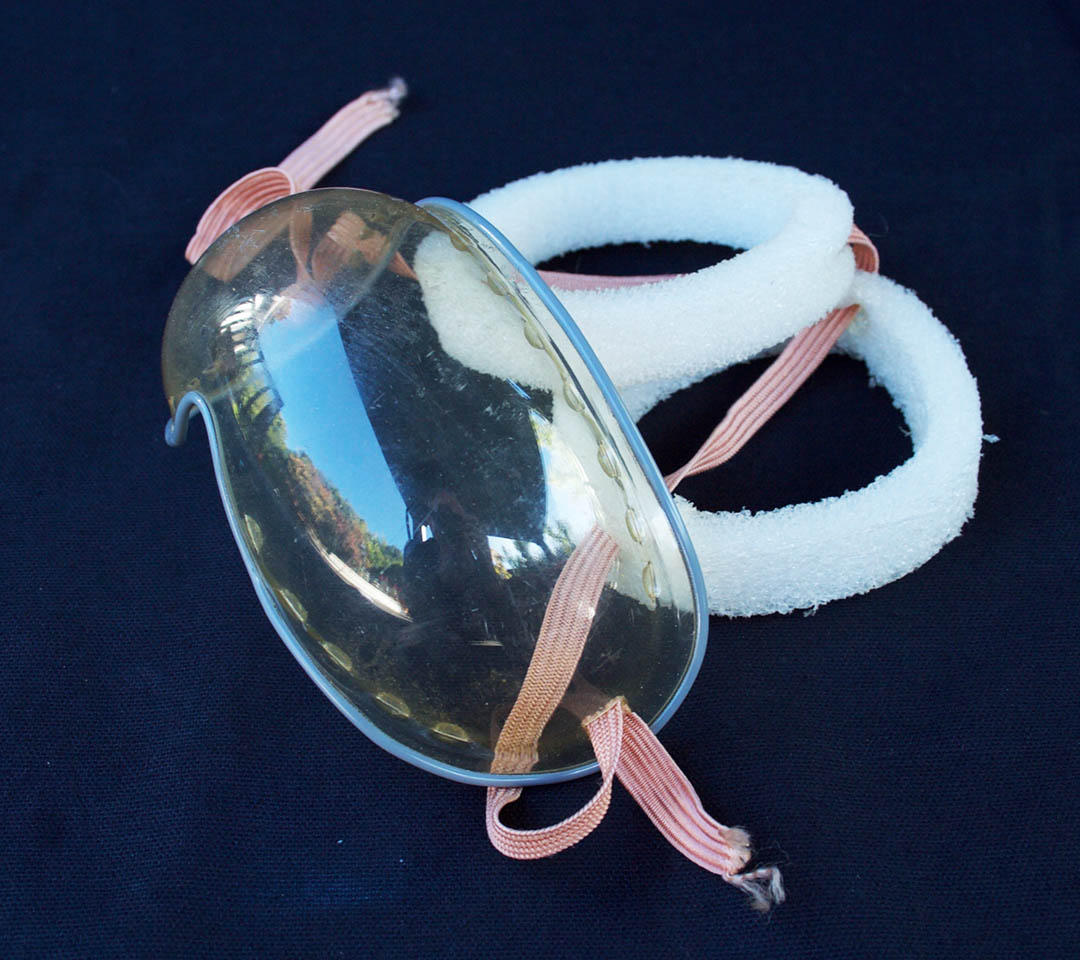
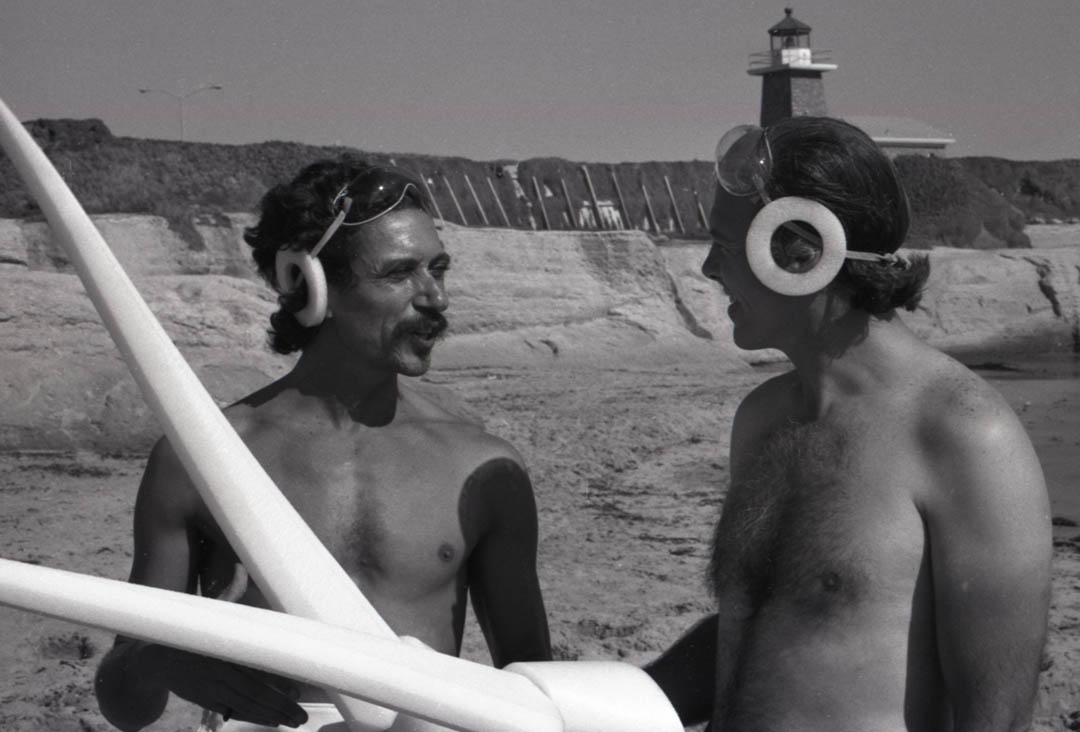

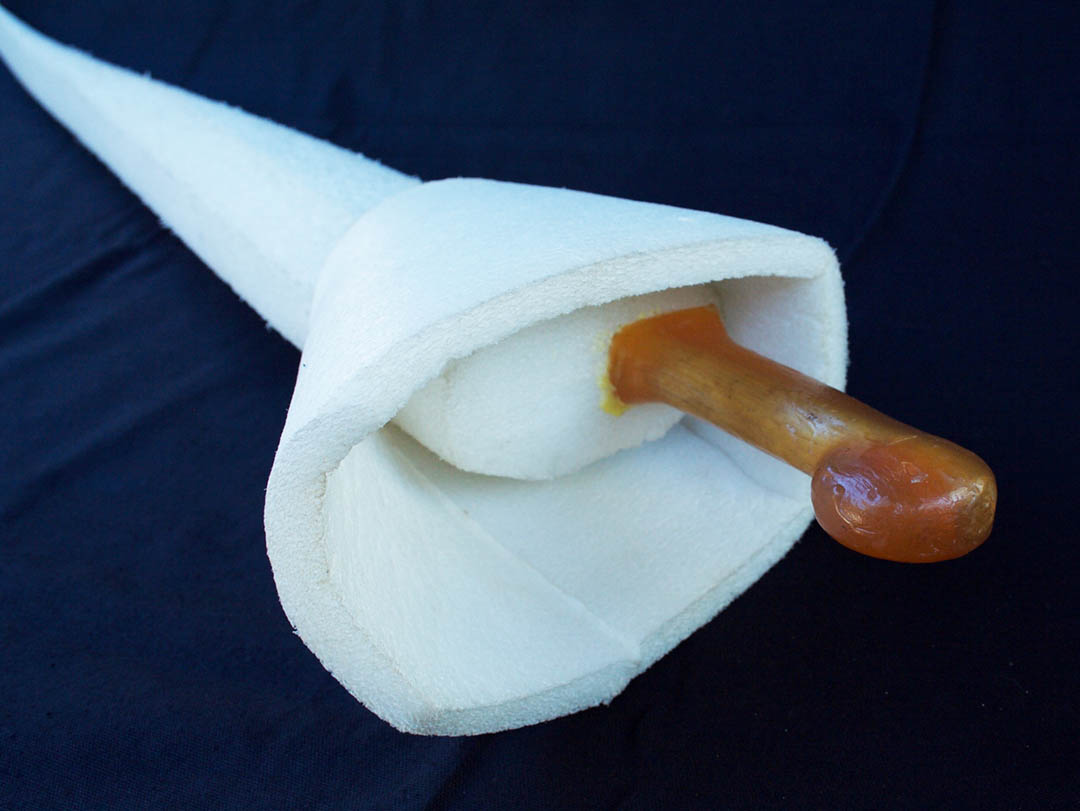
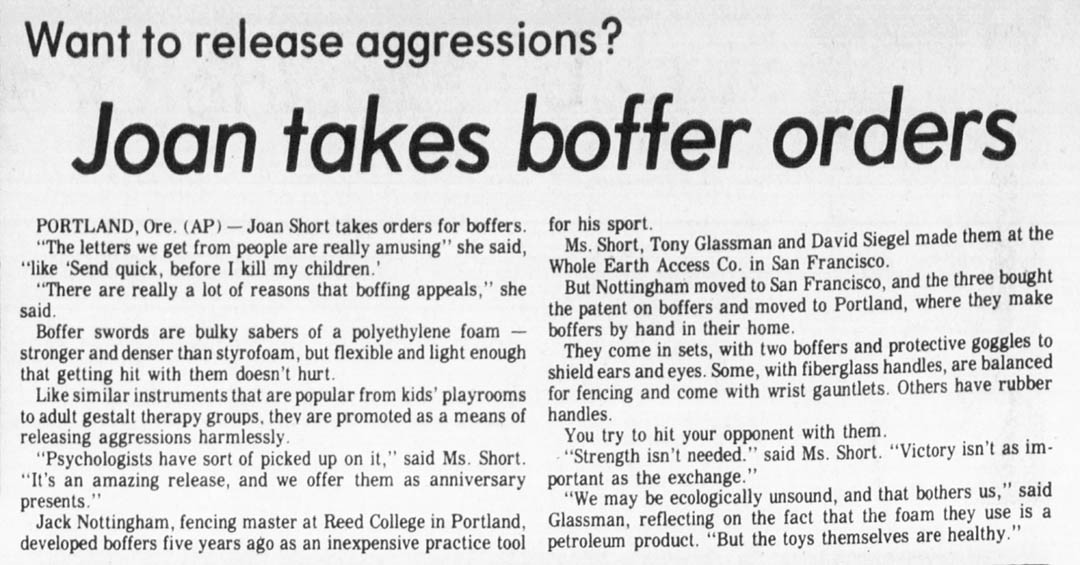
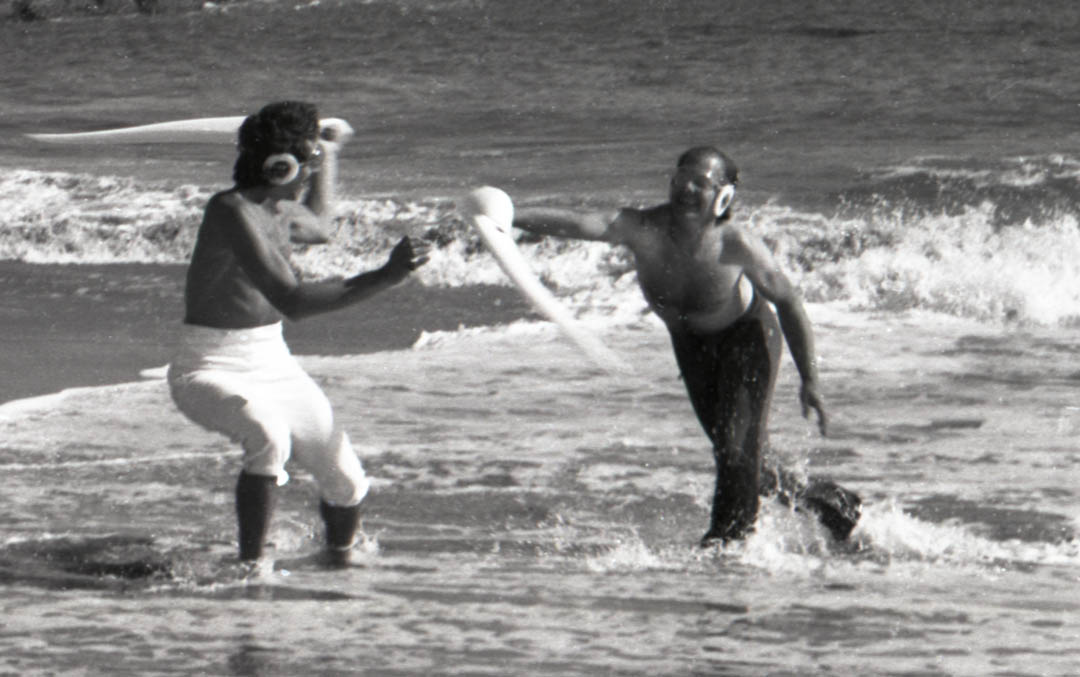
I had a pair of buffers in the70’s. I read about them in the Catalog and picked them up while going through Portland. It would be good to find them again so my kids can whack each other
As a student of Jack Nottingham’s, we had a ball playing with the boffers! He’d break ’em out every now and then. I knew he made them cuz he casually mentioned it. Funny thing about Jack, he was fearless in moving forward with his design ideas. He designed a lovely jet airplane, he gave me the instructions for making a simple, quick geodesic dome homeless shelter- mentioned in Bucky Fuller’s book, and he decided to make violins toward the end of his life. Did he know how to do these things? No! He just jumped in with both feet, and you should too! He would be thrilled to know that someone started making Boffers again!
It takes a special kind of polyethylene – I found a source just outside Atlanta. I can make up a modern version (PVC pipe handle with a cap for stability).
Boffers were such a great part of that era- we would duel until someone would collapse in laughter. I thank you guys very much for this article about Jack Nottingham. It would be spectacular if somone could bring them back- I’ve never seen their equal- as had been said.
I think I still have the set of offers with which I started my daughter Alice in saber stashed away someplace in a cupboard. Two or three decades ago when I projected videos of Wagner’s RING cycle of operas for Loyola University Honors students, I would bring the offers along for working off tension during the intermissions. Very necessary for a four-five-hour opera.
N.B. The action depicted in the very lively first photo of boffing on the beach has long been outlawed: the fleche simply gave the attack too much of an advantage in sabre.
I met Jack Nottingham on Valencia St. in the Mission, a neighbor. We were up on a little balcony of the storefront he lived in, when, 15 minutes after meeting him he swept a huge pile of tablets into his hand and swallowed them. “I’ve been increasing my dosage of LSD steadily. Today I’ll see if there’s a maximum dose”. This accompanied with a burning, unblinking stare. He made boffers downstairs, pouring resin into moulds for the handles. He told me he had applied for a patent, hadn’t gotten one (then, at any rate), and was fending off large companies with only his “patent pending” on the handle. We put together one of his cardboard homeless shelters, cut cardboard with a template, glue it together to make a mini geodesic dome, waterproof it with varnish(?). Very light, almost free.
Jack was my father. Thanks for the article.